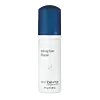What's inside
What's inside
 Key Ingredients
Key Ingredients

 Benefits
Benefits

 Concerns
Concerns

 Ingredients Side-by-side
Ingredients Side-by-side

Water
Skin ConditioningDisodium Cocoyl Glutamate
CleansingGlycerin
HumectantPolyglyceryl-10 Caprylate
EmulsifyingLauramidopropyl Betaine
CleansingPolyglyceryl-6 Caprylate
EmulsifyingPolyglyceryl-4 Caprate
EmulsifyingEthoxydiglycol
HumectantMagnesium Aspartate
Skin ConditioningZinc Gluconate
Skin ConditioningCopper Gluconate
Skin ConditioningGlycolic Acid
BufferingLactic Acid
BufferingSalicylic Acid
MaskingMalic Acid
BufferingBisabolol
MaskingHydrolyzed Jojoba Esters
Skin ConditioningBeta-Glucan
Skin ConditioningAlgin
MaskingTocopheryl Acetate
AntioxidantTocopherol
AntioxidantEthyl Macadamiate
Skin ConditioningSodium Cocoyl Glutamate
CleansingGlyceryl Caprylate/Caprate
EmollientXanthan Gum
EmulsifyingPentylene Glycol
Skin Conditioning1,2-Hexanediol
Skin ConditioningDecylene Glycol
Skin ConditioningSodium Chloride
MaskingCitric Acid
BufferingSodium Magnesium Silicate
Phytic Acid
Phenoxyethanol
PreservativeBenzoic Acid
MaskingSorbic Acid
PreservativeWater, Disodium Cocoyl Glutamate, Glycerin, Polyglyceryl-10 Caprylate, Lauramidopropyl Betaine, Polyglyceryl-6 Caprylate, Polyglyceryl-4 Caprate, Ethoxydiglycol, Magnesium Aspartate, Zinc Gluconate, Copper Gluconate, Glycolic Acid, Lactic Acid, Salicylic Acid, Malic Acid, Bisabolol, Hydrolyzed Jojoba Esters, Beta-Glucan, Algin, Tocopheryl Acetate, Tocopherol, Ethyl Macadamiate, Sodium Cocoyl Glutamate, Glyceryl Caprylate/Caprate, Xanthan Gum, Pentylene Glycol, 1,2-Hexanediol, Decylene Glycol, Sodium Chloride, Citric Acid, Sodium Magnesium Silicate, Phytic Acid, Phenoxyethanol, Benzoic Acid, Sorbic Acid
Water
Skin ConditioningSodium Laureth Sulfate
CleansingCocamidopropyl Betaine
CleansingSodium Lauroyl Oat Amino Acids
CleansingSodium Chloride
MaskingArtemisia Vulgaris Extract
Skin ConditioningCamellia Sinensis Leaf Extract
AntimicrobialCrithmum Maritimum Extract
Skin ConditioningHordeum Distichon Extract
Skin ProtectingPhellodendron Amurense Bark Extract
Skin ConditioningPlantago Lanceolata Leaf Extract
AntimicrobialPterocarpus Soyauxii Wood Extract
AstringentSpiraea Ulmaria Extract
AstringentButylene Glycol
HumectantGlycerin
HumectantTetrasodium EDTA
Phenoxyethanol
PreservativeEthylhexylglycerin
Skin ConditioningBenzoic Acid
MaskingParfum
MaskingCI 42090
Cosmetic ColorantCI 17200
Cosmetic ColorantCitronellol
PerfumingHexyl Cinnamal
PerfumingLimonene
PerfumingLinalool
PerfumingWater, Sodium Laureth Sulfate, Cocamidopropyl Betaine, Sodium Lauroyl Oat Amino Acids, Sodium Chloride, Artemisia Vulgaris Extract, Camellia Sinensis Leaf Extract, Crithmum Maritimum Extract, Hordeum Distichon Extract, Phellodendron Amurense Bark Extract, Plantago Lanceolata Leaf Extract, Pterocarpus Soyauxii Wood Extract, Spiraea Ulmaria Extract, Butylene Glycol, Glycerin, Tetrasodium EDTA, Phenoxyethanol, Ethylhexylglycerin, Benzoic Acid, Parfum, CI 42090, CI 17200, Citronellol, Hexyl Cinnamal, Limonene, Linalool
 Reviews
Reviews

Ingredients Explained
These ingredients are found in both products.
Ingredients higher up in an ingredient list are typically present in a larger amount.
Benzoic Acid is used to preserve and adjust the pH of products.
The antimicrobial property of Benzoic Acid helps elongate a product's shelf life. Its main role is to reduce fungi growth and is not found to be effective at fighting bacteria. Therefore Benzoic Acid is always added along with other preservatives.
In its pure form, Benzoic Acid looks like a white crystalline solid. It has slight solubility in water.
The name of Benzoic Acid comes from gum benzoin, which used to be the sole source of deriving this ingredient. Benzoic Acid is the most simple aromatic carboxylic acid.
Benzoic Acid is naturally occuring in strawberries, mustard, cinnamon, and cloves. It has a slight scent but is not considered to be a fragrance.
Learn more about Benzoic AcidGlycerin is already naturally found in your skin. It helps moisturize and protect your skin.
A study from 2016 found glycerin to be more effective as a humectant than AHAs and hyaluronic acid.
As a humectant, it helps the skin stay hydrated by pulling moisture to your skin. The low molecular weight of glycerin allows it to pull moisture into the deeper layers of your skin.
Hydrated skin improves your skin barrier; Your skin barrier helps protect against irritants and bacteria.
Glycerin has also been found to have antimicrobial and antiviral properties. Due to these properties, glycerin is often used in wound and burn treatments.
In cosmetics, glycerin is usually derived from plants such as soybean or palm. However, it can also be sourced from animals, such as tallow or animal fat.
This ingredient is organic, colorless, odorless, and non-toxic.
Glycerin is the name for this ingredient in American English. British English uses Glycerol/Glycerine.
Learn more about GlycerinPhenoxyethanol is a preservative that has germicide, antimicrobial, and aromatic properties. Studies show that phenoxyethanol can prevent microbial growth. By itself, it has a scent that is similar to that of a rose.
It's often used in formulations along with Caprylyl Glycol to preserve the shelf life of products.
Chances are, you eat sodium chloride every day. Sodium Chloride is also known as table salt.
This ingredient has many purposes in skincare: thickener, emulsifier, and exfoliator.
You'll most likely find this ingredient in cleansers where it is used to create a gel-like texture. As an emulsifier, it also prevents ingredients from separating.
There is much debate on whether this ingredient is comedogenic. The short answer - comedogenic ratings don't tell the whole story. Learn more about comegodenic ratings here.
The concensus about this ingredient causing acne seems to be divided. Research is needed to understand if this ingredient does cause acne.
Scrubs may use salt as the primary exfoliating ingredient.
Learn more about Sodium ChlorideWater. It's the most common cosmetic ingredient of all. You'll usually see it at the top of ingredient lists, meaning that it makes up the largest part of the product.
So why is it so popular? Water most often acts as a solvent - this means that it helps dissolve other ingredients into the formulation.
You'll also recognize water as that liquid we all need to stay alive. If you see this, drink a glass of water. Stay hydrated!
Learn more about Water